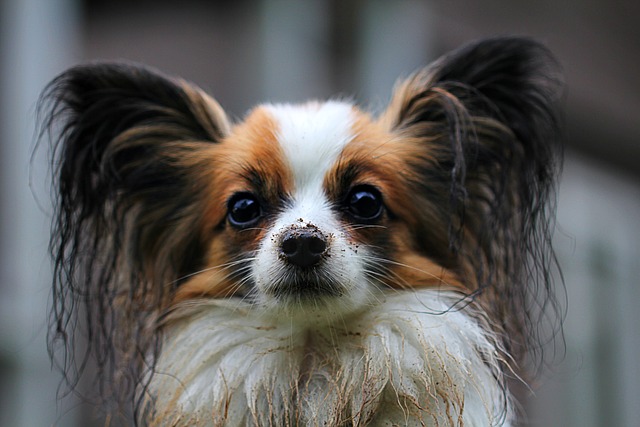
How can I tell if my dog's heatstroke is serious
Let’s be real: It’s a sticky August morning in Los Angeles, and you took your 2-year-old Golden Retriever, Max, for a walk a little later than usual
If you’re a new dog parent in the US—maybe you just adopted a fluffy Lab puppy or a sweet senior Poodle—you’ve probably noticed little things like bad breath or red gums and wondered, “Can I actually fix my dog’s tooth decay?” It’s a common worry, and the answer depends on how early you catch it—plus, it ties right into how we care for dogs here, from local rules to everyday habits.
First, let’s keep the science simple: Dog tooth decay starts with plaque, that sticky film on teeth (just like in humans!). If you don’t brush it away, it hardens into tartar, which irritates gums and eats into tooth enamel. Here’s the key: early decay (when there’s just plaque or mild tartar) can be managed and even stopped, but once a tooth has a hole (a cavity), it can’t be reversed—your vet will need to treat it. My neighbor in Arizona learned this the hard way: She ignored her Corgi’s bad breath for months, and by the time she took him to the vet, he needed a tooth pulled. The vet told her if she’d started brushing when she first noticed the smell, they could’ve saved the tooth.
So, what do you actually do? Start with daily brushing—use a dog-specific toothbrush (smaller heads work better for breeds like Chihuahuas!) and flavorless or chicken-flavored toothpaste (human toothpaste has fluoride, which is toxic to dogs). My cousin in Chicago uses a finger brush for her Shih Tzu—he hates the regular brush, but he licks the chicken paste right off her finger, making brushing easy. Add weekly tartar control: Dental chews (look for the VOHC seal—vets in the US recommend this!) or a small amount of coconut oil on their kibble helps break down plaque. And take them to the vet every 6 months for a dental check—most US vets include a free oral exam with routine visits, so it’s easy to stay on top of.

Now, let’s link this to US rules and culture. First, compliance: Every state requires core vaccines (like rabies) by 4 months old—while this isn’t directly about teeth, a healthy dog needs regular vet visits, which is where you’ll catch tooth decay early. Also, always carry poop bags—cities like NYC and Seattle fine owners $100+ for leaving waste, and while you’re out walking, take a second to check your dog’s mouth: If they’re chewing on rocks or sticks (common for puppies!), that can scratch teeth and make decay worse.
Culturally, never punish your dog for resisting brushing. If your pup pulls away or whines, don’t hold their muzzle tight or yell—positive reinforcement works. A friend in Texas trains her Beagle by giving him a tiny piece of plain, cooked chicken after every brushing session. Now, he runs to his “dental bag” when she pulls it out—no more fights. The ASPCA and US animal welfare groups stress this: Punishment breaks trust, and caring for your dog’s teeth should be a calm, happy routine, not a battle.
If you live in an apartment (super common in LA or Boston), tweak your routine for small spaces: Brush your dog near the kitchen sink (easy to clean up!) instead of the living room, where they might get distracted by the TV. And when you’re in the elevator or hallway, avoid letting other dogs lick your pup’s face—saliva spreads bacteria that can worsen tooth decay, and it’s polite to ask other owners first anyway.
At the end of the day, reversing dog tooth decay is about timing and consistency. Catch it early, stick to a simple routine, and always lean on your vet—they’re your best resource for keeping those doggy smiles bright. And remember: A little daily brushing beats a costly vet visit later!

Let’s be real: It’s a sticky August morning in Los Angeles, and you took your 2-year-old Golden Retriever, Max, for a walk a little later than usual

You're enjoying a summer afternoon at the park when you notice your dog has stopped panting and appears disoriented - their gums are bright red

Let’s paint the picture: You’re in your Denver apartment, watching your 4-year-old Boston Terrier, Ruby, plop down mid-play session with her favorite toy

Many dog owners notice their pets nails seem shorter after regular walks,but how much does this daily activity actually help?The answer depends on where you walk—concrete sidewalks or asphalt streets gently file nails as a dog's paws hit the ground

Most dog owners notice their pup scooting across the carpet at some point, but few connect it to impacted anal glands. These small sacs near a dog’s rectum secrete a scent for marking territory

Most vets agree that regular dog teeth cleaning is key to avoiding painful dental issues later. For healthy adult dogs, a professional cleaning at the vet’s office every 12 to 18 months usually works well.